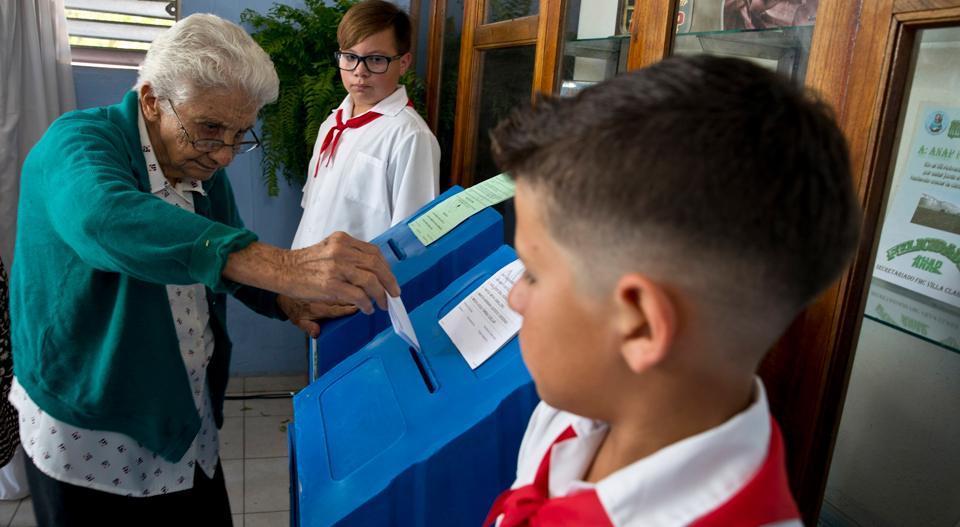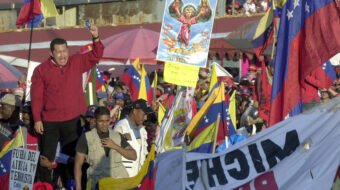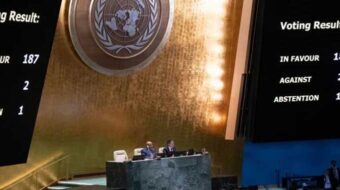
Voting on March 11 for Cuba’s National Assembly was newsworthy mostly because the body, which convenes on April 19, is charged with selecting a new Cuban President. Current President Raul Castro has served the two five-year terms he is allowed. The new president will be Cuba’s first with no personal participation in struggles leading to the victory of Cuba’s 1959 revolution. Castro’s departure signifies a generational transfer of political leadership.
Voting took place at 24,470 regular voting sites throughout the island, but also at 143 locations where people congregate who are away from home. Examples are hospitals and bus stations. Of Cuba’s 8.93 million eligible voters, 17.1 percent abstained and 82.9 percent voted to install 605 deputies for five-year terms. Most of them—80.4 percent—voted their approval of the entire slate of candidates. The rest chose particular candidates and rejected others.
This year, 86 percent of the new deputies are university graduates, 59.3 percent are white, 40.7 percent are African-descended, and 53.2 percent are women. Voters on March 11 also chose 1,265 delegates to provincial assemblies.
The process for electing National Assembly delegates reveals much about the nature of Cuba’s democracy. The planned initial actions of the Assembly’s are also instructive.
In September 2017, local “candidacy commissions” sought nominations for candidates for election to municipal assembles. Citizens in the districts of Cuba’s 168 municipalities did the nominating. The elections took place on November 26, 2017. The commissions had provided voters with a list of candidates and their biographies. Voting for municipal assembly deputies occurs every two-and-a-half years.
From then on, preparations began in earnest for electing the new National Assembly. Under the auspices of candidacy commissions, 970 meetings took place at which citizens identified a total of 12,000 possible candidates for the National Assembly. Next, the National Candidacy Commission selected 605 of the possible candidates to make up a list of candidates to be voted upon on March 11.
The National Candidacy Commission, headed by Gisela Duarte of the Cuban Workers’ Confederation (CTC), is made up of representatives of “mass and social organizations from all sectors of society.” All of Cuba’s Candidacy Commissions are chaired by representatives of the CTC.
Almost half—47.7 percent—of those whose names were on the list were deputies already elected to and serving in municipal assemblies. Each municipality offered at least two of its deputies as candidates for the National Assembly. Each one would be representing approximately 20,000 people.
The National Candidacy Commission itself determined the other candidates on the list. It sought recommendations from mass organizations, trade unions, local councils, and student federations. This year, according to Cubadebate.cu, candidates selected by the Candidacy Commission included nine student leaders, 24 researchers, 12 with sports affiliations, 47 educators, 83 from “productive services,” 34 health-care workers, 34 artists or writers, 22 military people, 39 mass-organization leaders, 46 “political leaders,” 41 government officials, 7 lawyers or judges, four religious leaders, and four delegates from the “non-state sector.”
Next, the Commission returned the entire slate of candidates, those it had named and those selected by the municipal assemblies, to the municipal assemblies. They either approved or rejected the list of 605 candidates. If a “pre-candidate” received less than 50 percent approval there, the Commission proposed an alternative candidate for consideration by the municipal assembly.
Voters on March 11 either voted “Yes” for the entire slate determined by the National Candidacy Commission, or they voted for some, but not all, of the names. They also chose the delegates to the provincial assemblies.
On being seated, on April 19, the National Assembly will act to choose Cuba’s national political leadership. Granma, the newspaper of Cuba’s Communist Party, wrote, “The National Assembly of People’s Power is the supreme body of state power and represents and expresses the sovereign will of all the people.” The newspaper continued, saying the Assembly is “the only body in the Republic invested with constituent and legislative authority.”
The Assembly will move first to select members of the Council of State. The National Candidacy Commission consults individually with deputies as to their individual choices for the 31 members of the Council of State. The names mentioned most frequently will appear on a slate of potential Council members. The deputies then will vote on the slate as it stands, or with modifications. Voting secretly, they will also select members of the Council of State, including its president and vice-presidents. Constitutionally, that president is president also of the Republic.
Cuban political writer Iroel Sánchez recently explained why he thinks Cuba’s electoral system is different. First, the municipal assembly delegates, “nominated and elected by the people, without intermediaries, are the ones who have the power to do what in other countries political parties do, which is to decide upon the lists of candidates to be submitted to voters.” Cuba’s Communist Party officially takes no part in elections there.
“Cuban electoral processes proceed without problems evident in elections of other countries and on the island before 1959.” He pointed to “political corruption, fraud, disregard of promises, and no provision for elected officials to render accounts or to be recalled.” And there’s no “propaganda, campaign promises, and money influence” in Cuban elections.
Sánchez explained that elections in Cuba are consistent with “the ethic of José Martí.” They are not based on precedents from “socialist regimes.” But “Cuban democracy is not synonymous with elections.” He pointed out that, “labor unions, student groups, and women’s organization carry out systematic processes of discussion and renovation in which problems affecting them are taken on and are presented to the government…. By law, union and student leaders at the base participate with voice and vote in leadership bodies in schools and workplaces, and even in the ministries.”












Comments